In my previous blog, I talked about the benefits enterprise healthcare organizations have seen when they implement Assign, our patient assignment software, across their entire organization.
The success of an enterprise rollout depends on more than technology. It requires strong leadership support, input from frontline users, and thoughtful change management to ensure adoption at every level.
In this blog, we’ll discuss the five factors that make enterprise healthcare software implementations successful:
- Choosing the right first site
- Scalability
- Reuseable technology
- Consistent teams
- Faster rollouts for subsequent facilities
Choosing the Right First Site
You‘ll have a number of facilities to choose from when you start an enterprise implementation. To choose the right first site, we’ll ask you:
- Which EHR(s) do you use? Is it one EHR across the entire enterprise or do some facilities use different EHRs? The same applies to scheduling systems
- Which workflows do you use? Do you use teach methodologies? Are you trying to accomplish geographic rounding or just evenly balancing patients and workload?
- Who would benefit the most from Assign? Who is already on board and which hospitalists are ready to stop doing the manual work and want the software?
- Which “rules” will be most important for your facility? Do you want workload balancing to override geography, or continuity of care, for example?
There are two common options when it comes to choosing your first site:
- Prove it with the Most Complex Facility: Many of our customers pick their largest census and the site that is the most complex. Once your other facilities see that it worked for such a large, complex site then they are more at ease with implementing a solution at their facility that is less complicated
- Prove it with the Most Likely to be Successful: As we know, sometimes it takes time to get staff on board – you want to make sure to choose a site that is stable and likely to be successful: a facility with good workflows, good IT support and is appropriately staffed
Scalability
The second key factor to success in enterprise healthcare software implementations is scalability.
What if different facilities have different needs? Can we still scale? Generally, I find that most enterprise healthcare organizations want to run their processes similarly across all their sites. In fact, if there’s a major deviation – say one facility requested to bypass geographic rounding rules in Assign – the enterprise management team would want to look into it and understand why.
Although we can definitely customize Assign for your unique facility – for example, with one organization we worked with, the first site had a large campus with a census of 600 so it was extremely important to them to make geographic rounding very tight. For a subsequent, smaller facility, they said Assign can be a bit more flexible to bypass a geographic rule if there was another reason in place (like preserving continuity).
This also makes it easier for the providers – they can work at multiple facilities and have the same rules and workflows. They’re all set up in the SSO network so we only have to expand their user profile to give them access to their next facility, and they’re rest assured that the same assignment rules will prevail.
Reuseable Technology
In enterprise organizations, we can use a single interface engine, which can handle data from multiple facilities and EHRs, enabling the team to set up the system once and replicate the framework for each new project.
The goal is to set up one master interface and then split into up into multiple sites. Even if different facilities use different EHRs, data can be normalized and fed into a single interface engine, though this may require additional technical work to standardize data values across systems.
If you’re not able to do one master interface, alternatively we can at least get all of the interface data for all the facilities when embarking on the first site. Setting up all necessary interfaces at the start of an enterprise implementation, rather than incrementally, streamlines future rollouts and reduces repeated IT involvement.
The same thing applies for scheduling interfaces – we want all the Qgenda/Amion etc. interfaces set up at the beginning and then we can handle the rest.
Whenever there are technological upgrades, such as an Epic upgrade and data values are changing, this is managed and communicated at a central point and we can do it all at once across the board.
Consistent Teams
Having consistent project management and IT teams throughout enterprise implementations improves efficiency, ensures faster response times, and smoother rollouts.
Staff the enterprise project with the same project manager for all facilities. While the first facility will take the longest to implement, having the same project manager for subsequent facilities means they’ll have intimate knowledge about the project implementation and spend much less time on each subsequent implementation.
Consistent IT Teams: Having a consistent IT team enables quick and effective responses to technical requests, as team members become familiar with the process and requirements. This makes new facility go-lives much faster. For example, in one recent enterprise healthcare implementation, I was launching the fourth facility and was working with the same IT manager who staffed the first three facilities – he knew that we need a certain facility code, from a certain interface, in order for us to send the Attending update in the EHR.
Having consistent teams also means consistent software maintenance. You’ll have one central group or one user who will be responsible for handling maintenance or administrative changes across the network, such as a new provider joining your network who needs to get set up in Assign.
Consistent teams make training easier – because there’s a standard process in place that we can replicate at each facility. For example, one of our customers always has the Night NP make the list during the last 30 mins of their 7 pm- 7 am shift before they head out. This is the same process across each of their facilities. This sets the expectation during the roll-out that this role will be responsible for running Assign at each facility so there are no surprises, and enables us to easily train them in the same way.
We do the same on our end: When implementing enterprise-wide, you’ll also have the same medaptus Project Manager to ensure consistency and reliability.
Faster Rollouts
As a result of everything mentioned above, you get faster and better roll-outs. Each additional site and project goes quicker because the groundwork, infrastructure, and people are already in place. The only thing we need is buy-in from the facility itself and to get the staff trained.
Subsequent facilities really benefit from being further along in line because they get a solution that is already custom-built to their specifications and we’ve already implemented multiple times at their other facilities.
This cuts our typical implementation time in half – from 90 days to only 45 days for subsequent facilities.
The End Result
Having consistent people and technology in place across an entire organization benefits providers – and ultimately, patients too.
Interested in learning more about working with medaptus? Check out what to expect during our implementation process here.
Get the latest updates and news delivered to your inbox.
Subscribe to our newsletter today.





